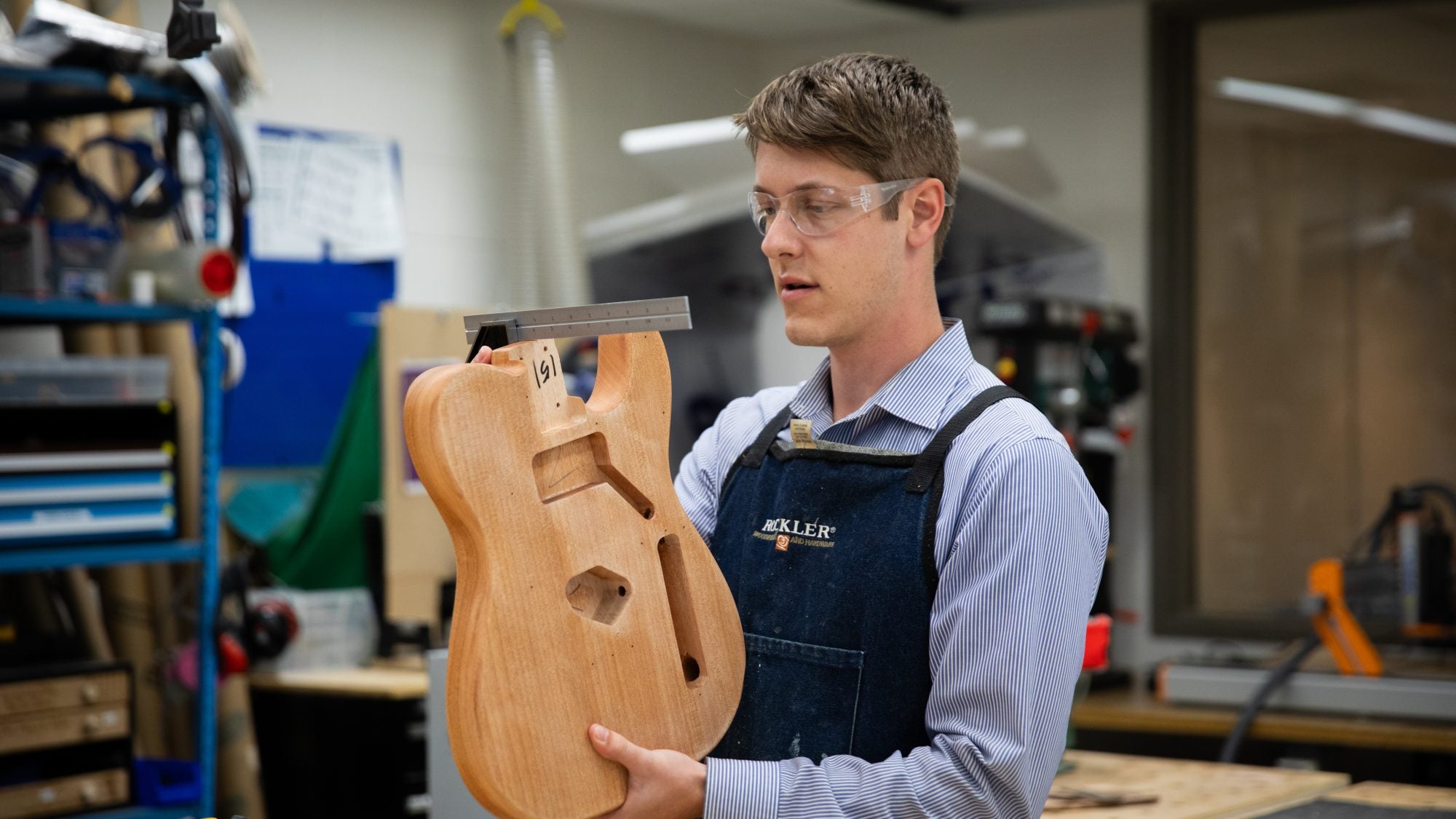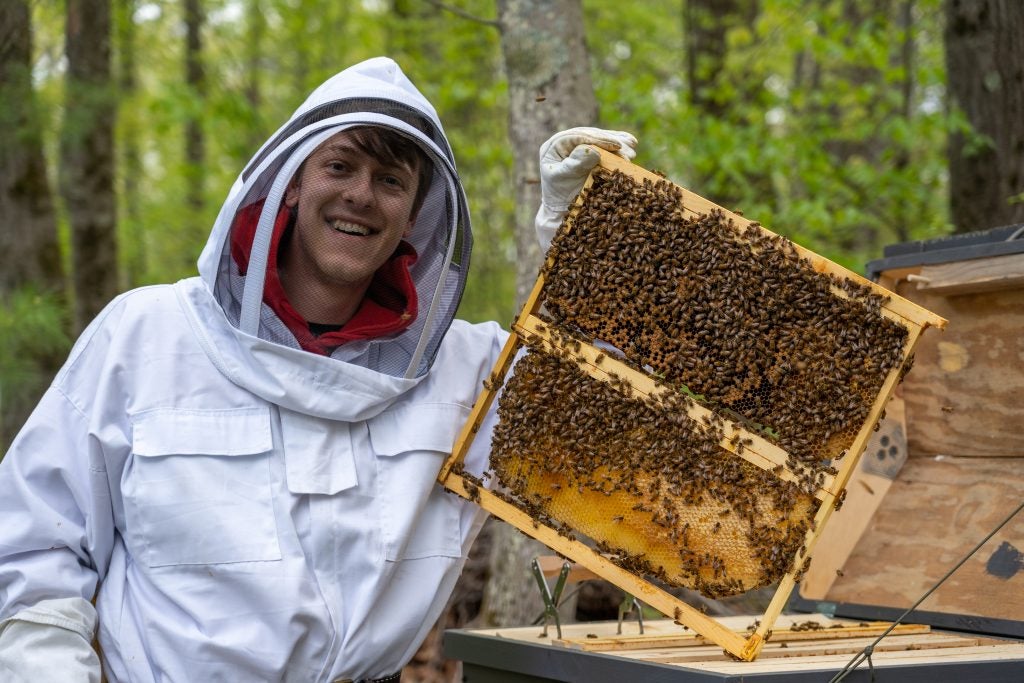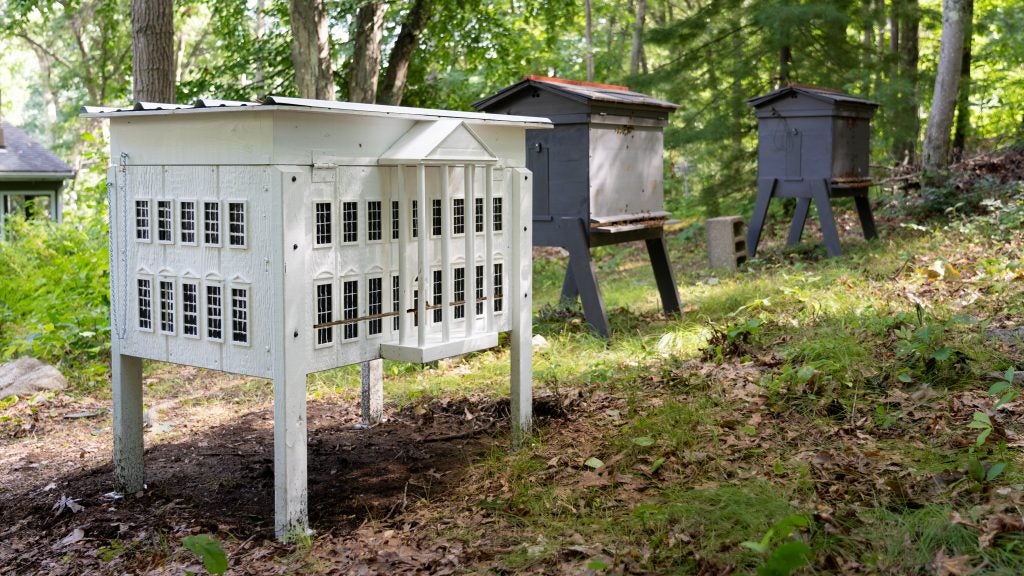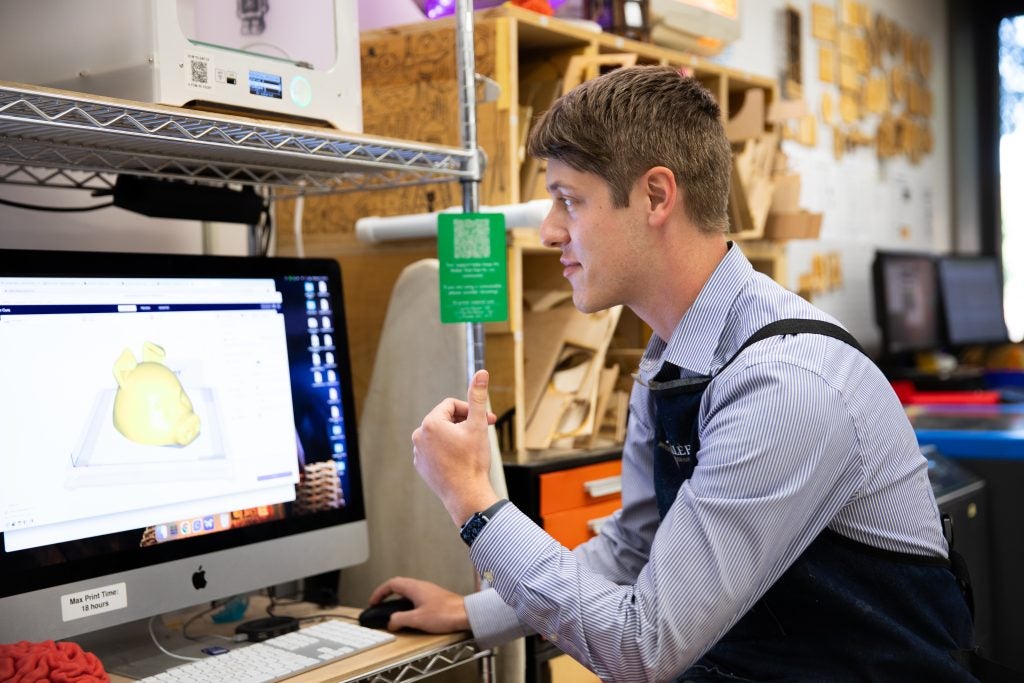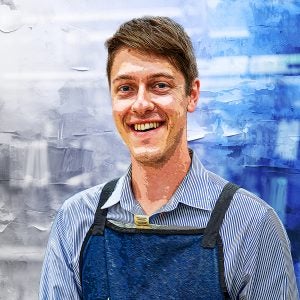
David Strout first began making things in his dad’s woodshop. He’d spend hours in the shop carving wooden pens that he would sell at farmers markets and craft fairs across the Northeast.
“I got down to making four an hour,” he said. “I probably made 500 pens.”
Years later, he’s helping Georgetown faculty, staff and students make things too. As the manager of Georgetown’s Maker Hub, a collaborative, creative space in Lauinger Library, Strout works closely with Hoyas to help bring their ideas and passions to life.
Through the Maker Hub, Strout offers different technologies and workshops on 3D printing, laser cutting, bookbinding, printmaking, assembling a small robot, and crafting Halloween costumes. He integrates curriculum into the space by hosting classes, manages student volunteers, workshops ideas and invites faculty to use the hub’s equipment. And aside from helping Hoyas make things, Strout wants to help overturn students’ assumptions about themselves as inventors, creatives, makers and designers too.
“It’s a lot of encouraging students to try things that they’ve told themselves they’re not good at,” he said. “You’ll get a lot of, ‘I’m not an artist, so I can’t do this.’ But by the end [of the class], they’ve made a sculpture and assigned artistic meaning to it. Hopefully they leave and think, ‘maybe my preconceived notion wasn’t quite as accurate as I thought it was.’”
Before coming to Georgetown, Strout worked in Brown University’s makerspace as an undergraduate before working as an engineer. Now, he brings his engineering and woodworking background to campus, empowering community members to build and try new things.
“It’s been very fun to feel integrated with the Georgetown community,” he said. “I go into these projects almost like a joint venture and just see what we can figure out.”
Figure out the unexpected joy Strout gets from woodworking, the buzzy hobby he picked up during the COVID-19 pandemic, and the one thing he wishes everyone knew about his job.
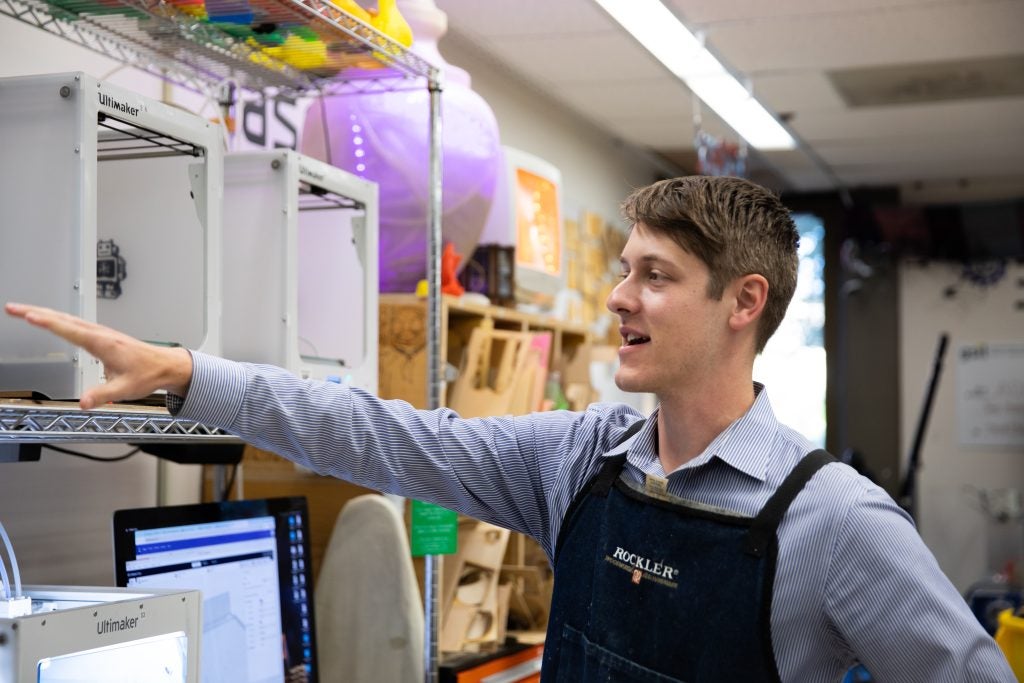
How I got the woodworking bug: Growing up, my father was a carpenter, and so I had a woodshop in the basement of my house. This also coincided with the start of YouTube woodworkers — the first couple guys on YouTube creating woodworking content. I would lie on my couch and watch videos of people making wooden pens. Then for Christmas one year, I was gifted a small wood lathe, which is a tool that spins wood. I started producing these wooden pens and would give them as gifts. I could crank them out and we would take them to craft fairs.
Why woodworking brings me joy: I find it a little more thought-provoking then some other forms of making. With metal, if you make a mistake, you can just weld pieces back together and blend it out. You’d never know. But with woodworking, there’s always a tell. You always can see where it’s been worked. To do that skillfully is a high level of expertise and patience and thought. It’s also fun to take advantage of the artistic aspects of wood that are different from other materials. I find myself drawn to the grain of a piece of wood and how to accentuate that. A lot of people talk about that zen state of working with material in a very close manner, being precise, and it feels good. It smells good. Then, in the end, I hope it looks good.
What brings me joy in my job: Helping people make things. Almost every day, I’ve helped someone leave with a tangible thing. That’s so rewarding. When someone comes in, it could be super simple, ‘I want to make a sticker.’ Later, they leave with a sticker. Or it could be something like ‘I want to 3D print a prototype of a new medical device I’ve invented’ – and that might be a collaboration that lasts for months. There’s a huge spectrum of projects that I get to help students with, and there’s something very empowering about helping students do that. There’s also the joy of that realization students have — that they can have the capacity to effect change in the world.
One thing I hope students learn by making things: When students come in and take on a project, even if it’s something small like making a clock in one of our woodworking workshops, it can flip something in their minds: that our entire environment has been built and designed and thought of by someone like you. So who’s to stop you from recognizing challenges in your own life or in lives around you? We can change that. We can build what we want to exist, and you don’t have to wait for someone else to do it. You can just do it.
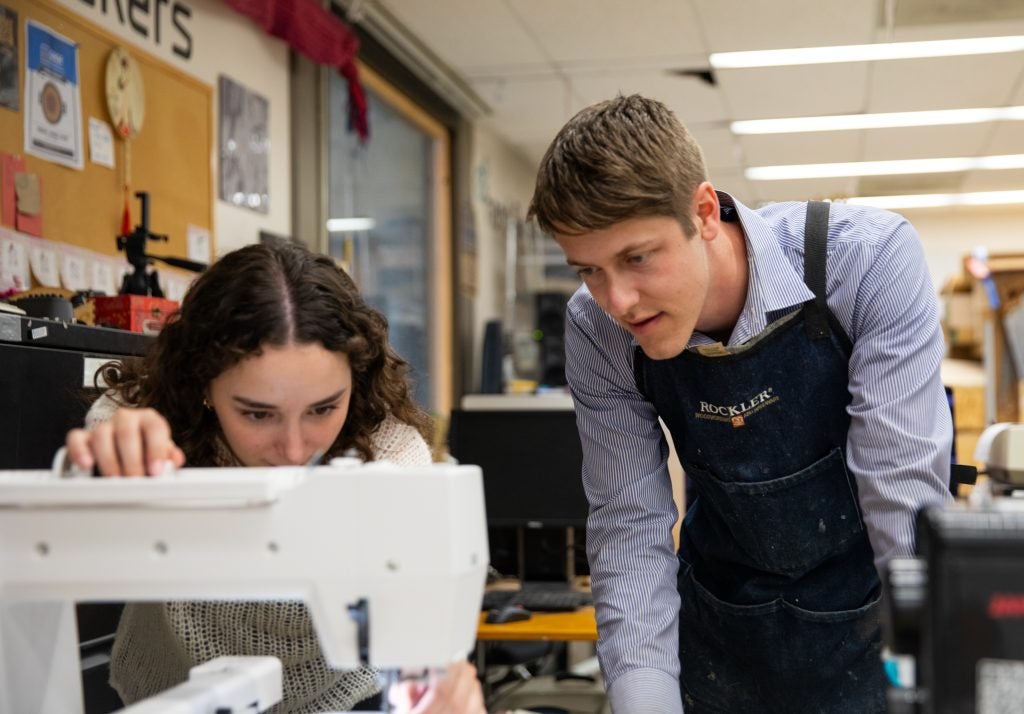
My go-to soundtrack when I’m making things: I’m usually a classic-rock-in-the-shop kind of guy. I don’t listen to a whole lot of that because that’s not exactly what the students here listen to day-to-day. I let them have control of the speakers. But Rolling Stones, The Who, Styx. That’s what my dad had on when I worked in his woodshop. There are a couple songs that if they come on, I feel like I should be making a pen or something I used to make. It just transports me right back to that shop, which is so fun.
My go-to place to eat: The Midnight Mug in the library. They’re the most convenient, so I’m usually there. I order a muffin or a bagel and a hot coffee. If I’m feeling sneaky, a Pop-Tart.
The pandemic hobby I took up: In 2019, my wife and I did a year-long trip around New Zealand. We stayed with a guy who built his own beehives. For me, that was the moment where I was like, you can do that?! I went down this rabbit hole of learning about bees and the traditional way bees are kept, which as it turns out, is well set up for industrial beekeeping and for beekeepers in southern climates where it’s warmer, but not very good if you’re living in cold climates. When I got back, in 2020, I had my dad’s woodshop and CAD design software, so I modeled on my computer a beehive. I then made version two, which was the White House Hive. Three weeks ago, I pulled 40 pounds of honey from it.
